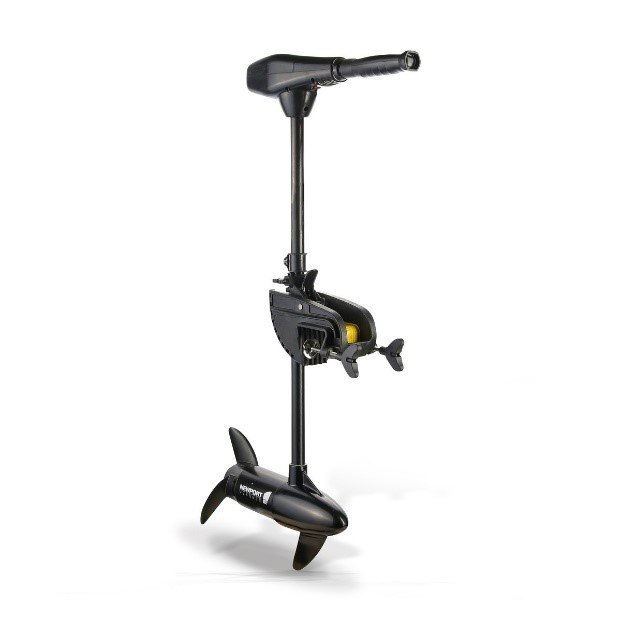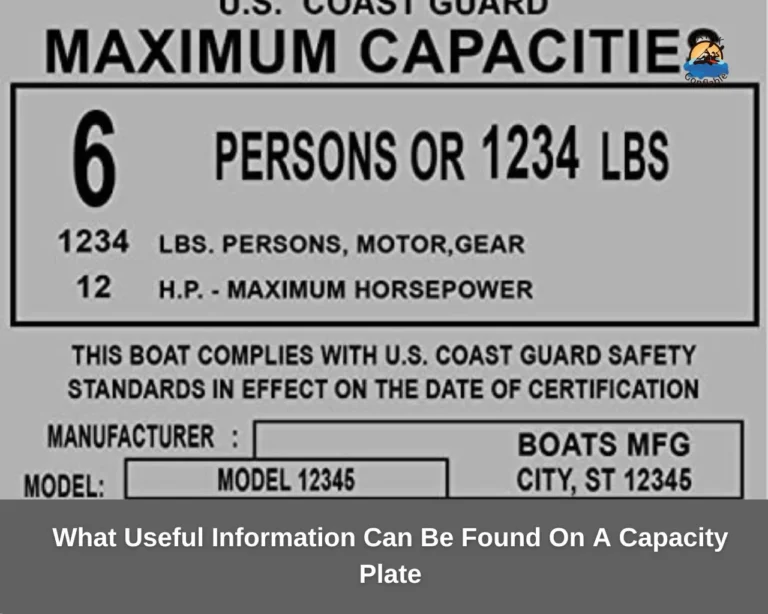Come fa la maggior parte delle ancore a tenere in posizione una barca da diporto

Le ancore sono una parte vitale di qualsiasi imbarcazione, poiché forniscono stabilità e impediscono all'imbarcazione di andare alla deriva. Le ancore sono dispositivi utilizzati per fissare una barca o una nave al fondale marino. Esistono molti tipi diversi di ancoraggi, ciascuno con i propri vantaggi e svantaggi.
Funzionano tutti essenzialmente allo stesso modo: incastonandosi nel fondale marino e afferrandolo con gli artigli. Questo articolo discuterà i diversi tipi di ancore e come funzionano con le imbarcazioni da diporto.
Esistono tre tipi principali di ancore utilizzate nella nautica da diporto: artiglio, danforth e rampino:
L'ancora ad artiglio è un'attrezzatura versatile che può essere utilizzata in una varietà di situazioni. È progettato per afferrare il fondale marino e fornire stabilità a una nave.
L'ancora ad artiglio è la tipologia più semplice ed è composta da due o più artigli metallici che scavano nel fondo. L'artiglio può essere utilizzato per fissare un'ancora nella sabbia, nel fango o nella roccia.
L'ancora ad artiglio è ideale per l'uso in acque poco profonde. Può essere utilizzato anche in aree con molti detriti, poiché gli artigli possono afferrare rocce e altri oggetti.
Quando si utilizza l'ancora ad artiglio, è importante assicurarsi che l'imbarcazione sia posizionata correttamente prima di calare l'ancora.
Gli artigli devono essere rivolti verso il basso e l'ancora deve essere calata il più vicino possibile al fondale marino. Una volta che ha toccato il fondo, tirare la barra per posizionare gli artigli.
La prossima è l'ancora Danforth. L'ancora Danforth è un tipo di ancora per nave di forma triangolare. Prende il nome dal suo inventore, John Danforth. L'ancora è progettata per seppellirsi rapidamente nel fango o nella sabbia, rendendola ideale per l'ancoraggio in acque poco profonde.
Le pinne dell'ancora scavano nel fondo e mantengono la barca in posizione. Questo tipo di ancoraggio è costituito da due piastre metalliche fissate ad una traversa.
La traversa ha quattro punte che scavano nel fondale quando l'ancora viene calata. Il Danforth non è altrettanto efficace nelle aree rocciose o coralline, quindi non dovrebbe essere utilizzato in questi tipi di ambienti.
L'ancora può essere fissata utilizzando il verricello o il verricello della barca. Innanzitutto, la catena deve essere lasciata uscire finché non c'è abbastanza gioco da formare un ampio anello attorno all'ancora.
L'anello dovrebbe quindi essere posizionato sopra l'ancora e la catena tirata dovrebbe essere tesa. Il motore della barca può quindi essere utilizzato per tirare fuori l'ancora dall'acqua e fissarla.
L'ancora del rampino ha quattro o più punte che scavano nel fondo ed è ottima per i fondali rocciosi. È uno strumento versatile che può essere utilizzato in diverse situazioni.
È ideale per l'ancoraggio in spazi ristretti o quando lo spazio per gettare l'ancora è limitato. Il rampino può essere utilizzato anche per agganciare oggetti o ormeggi in acqua.
Quando si utilizza il rampino è importante assicurarsi che l'ancora sia fissata alla barca. In caso contrario, si potrebbe causare la perdita dell'ancora e possibili danni all'imbarcazione.
Importanza delle ancore nelle imbarcazioni da diporto
La nautica da diporto è un passatempo popolare apprezzato da molte persone negli Stati Uniti. Esistono diverse imbarcazioni che possono essere utilizzate per scopi ricreativi, tra cui pescherecci, motoscafi e barche a vela.
La nautica da diporto può essere un modo divertente per uscire e godersi la natura, ma può anche essere un ottimo modo per trascorrere del tempo con amici e familiari.
Gli appassionati di nautica si ritrovano spesso attratti dall'acqua per il suo effetto calmante e per l'opportunità di esplorare nuove aree. L'ancora per barca è un elemento fondamentale dell'attrezzatura per qualsiasi imbarcazione da diporto.
È importante selezionare l'ancora giusta per il tipo di barca e le condizioni in cui la utilizzerai. Sul mercato sono disponibili diversi tipi di ancoraggi, ciascuno con i propri punti di forza e di debolezza.
Quando scegli un'ancora, devi considerare le dimensioni e il peso della tua barca, nonché il tipo di condizioni del fondale in cui ancorerai.
I tipi più comuni di ancore sono le ancore Danforth, le ancore ad artiglio e le ancore a rampino come visto sopra. Quando arriva il momento di ancorare la tua barca in un'area ricreativa, dovrai utilizzare un'ancora adatta.
Esistono molti tipi di ancore sul mercato, quindi è importante selezionare quella giusta per la tua barca e la tua situazione. Se non sei sicuro di quale sia l'ancora migliore per te, chiedi a un esperto presso il tuo negozio di nautica locale.
Il tipo più comune di ancora per imbarcazioni da diporto è un'ancora in stile aratro. Questo tipo di ancoraggio è efficace sia su fondali sabbiosi che fangosi.
È dotato di due o più pinne metalliche che scavano nel fondo per fissare la barca. Uno svantaggio delle ancore per aratro è che possono essere difficili da recuperare dalle acque profonde.
Un altro tipo comune di ancora per imbarcazioni da diporto è l'ancora ad artiglio. Questi sono spesso utilizzati su piccole imbarcazioni e funzionano in modo simile alle normali ancore per aratri.
Come utilizzare ancore diverse sulla tua barca da diporto
Le ancore forniscono un modo per proteggere il tuo barca in posizione e costituiscono un elemento importante dell'attrezzatura per qualsiasi diportista. Sul mercato sono disponibili numerosi tipi di ancoraggi, ciascuno con i propri vantaggi e svantaggi.
È importante selezionare l'ancora giusta per la tua barca e utilizzarla correttamente per ottenere risultati ottimali. Ecco alcuni suggerimenti su come utilizzare diverse ancore sulla tua imbarcazione da diporto.
Ancore stile aratro
Un'ancora in stile aratro è un tipo di ancora per barca progettata per seppellirsi nel fondo dell'acqua. Prende il nome dalla forma della lama, che ricorda quella di un aratro.
Questo tipo di ancoraggio viene spesso utilizzato in aree con molti sedimenti perché può seppellirsi rapidamente e fornire una presa stabile.
L'ancora è composta da due parti: l'aratro e il gambo. L'aratro è l'estremità pesante e smussata che viene sepolta nel fondale marino, mentre il gambo è l'estremità più leggera e sottile che si attacca alla barca.
Storia: come è nata l'ancora in stile aratro?
L'ancora in stile aratro è un tipo popolare di ancora utilizzata sia nelle immersioni ricreative che in quelle commerciali. È così chiamato per la sua somiglianza con il vomere, la parte tagliente dell'aratro.
L'ancora in stile aratro fu sviluppata per la prima volta all'inizio del 1800 da Pierre Denys de Montfort, un ufficiale di marina francese e pioniere delle immersioni. Il progetto di De Montfort consisteva in una grande lama di metallo attaccata a una corda appesantita.
La lama veniva sepolta nel fondo del mare e il subacqueo utilizzava quindi la corda per avvicinarsi alla lama. Questo tipo di ancoraggio si rivelò molto efficace e divenne presto popolare tra i subacquei di tutto il mondo.
Successivamente è stata introdotta una versione migliorata dell'ancora in stile aratro che includeva un meccanismo a braccio pieghevole. Questa ancora dell'aratro poteva essere ripiegata contro lo scafo quando non in uso e dispiegata tirando un filo attaccato al braccio.
L'aratro a molla è stato quindi rilasciato sul fondo del mare. Ciò consentiva di riporre l'ancora sottocoperta e quindi dispiegarla da uno scivolo o da un cestino.
Design: quali sono i vantaggi dell'utilizzo di un'ancora stile aratro?
Quando si tratta di ancoraggi, ci sono molti tipi diversi tra cui scegliere. Ma uno dei tipi più popolari è l'ancora in stile aratro. Questo tipo di ancora presenta numerosi vantaggi che lo rendono un'ottima scelta per qualsiasi imbarcazione.
L'ancora in stile aratro è progettata per seppellirsi nel fondale marino mentre viene abbassata. Ciò lo rende molto stabile e garantisce che non si muova, indipendentemente da quanto agitato sia il mare. Inoltre, ha un'ampia superficie che gli aiuta ad aderire saldamente al fondale marino.
Questo tipo di ancoraggio è anche molto facile da usare. Tutto quello che devi fare è abbassarlo sul fondo del mare e poi lasciarlo andare. Si occuperà del resto seppellendosi e mantenendo la tua barca in posizione.
Usi: dove puoi utilizzare un'ancora stile aratro?
L'ancora in stile aratro è versatile e può essere utilizzata in una varietà di applicazioni, sia a terra che in acqua. Può essere utilizzato come ancora per barca, ancora per ormeggio o peso per nassa per granchi.
L'ancora in stile aratro è ottima anche per l'uso in acque poco profonde o in aree con molte rocce poiché ha un'ampia superficie che scava nel fondo. Tuttavia, l'ancora stile aratro non deve essere utilizzata in acque profonde o vicino alle barriere coralline perché può facilmente incastrarsi.
L'ancora per aratro è un'ottima scelta per la tua imbarcazione da diporto se stai cercando un'ancora che manterrà la tua barca in posizione in una varietà di condizioni.
È facile da usare e installare ed è anche durevole e affidabile. Quindi, se stai cercando una nuova ancora per la tua barca, assicurati di considerare l'ancora in stile aratro.
Ancore Danforth
Le ancore Danforth sono le ancore più popolari sul mercato. Sono fatti di metallo e hanno una pinna progettata per scavare nel terreno e mantenere la barca in posizione.
Sono fatti di metallo e hanno una punta acuminata su un'estremità che viene conficcata nel terreno e una grande pinna sull'altra estremità che scava nel terreno.
Esistono diversi tipi di ancoraggi Danforth, ma tutti hanno una cosa in comune: sono affidabili e durevoli.
Le ancore Danforth sono una scelta popolare per i proprietari di barche che cercano un'ancora che sia durevole e affidabile. Il design Danforth è semplice ed efficiente, rendendolo un'opzione popolare per i diportisti.
Inoltre, l'ancora Danforth è nota per la sua capacità di tenuta, che la rende un'ottima scelta per l'ancoraggio in condizioni ventose o avverse.
Come ha fatto la Danforth Anchor a guadagnare così tanta popolarità
L'ancora Danforth è uno stile di ancoraggio che ha visto un recente aumento di popolarità. Questo tipo di ancoraggio prende il nome dal suo progettista, John Danforth, e deve la sua popolarità al design semplice e alla facile installazione.
L'ancora Danforth può essere utilizzata in una varietà di applicazioni e ambienti, rendendola un'opzione versatile per i diportisti. È apprezzato per la sua facilità d'uso e la sua capacità di tenuta in una varietà di terreni.
Come utilizzare correttamente ed efficientemente l'ancora Danforth
L'ancora Danforth è un'attrezzatura collaudata utilizzata dai diportisti da anni. Sebbene sia un design semplice, ci sono alcune cose da tenere a mente quando lo si utilizza per ottenere i migliori risultati.
Discuteremo il modo corretto di utilizzare l'ancora Danforth, oltre ad alcuni suggerimenti su come renderla più efficiente.
- Innanzitutto, assicurati di selezionare l'ancora della dimensione giusta per la tua barca. L'ancora deve essere dimensionata per adattarsi al cuneo o al musone di prua dell'imbarcazione. Anche l'ancora e la sua corda (la fune che collega l'ancora alla barca) dovrebbero adattarsi.
- In secondo luogo, utilizzare molta catena (o corda) tra l'ancora e la barca. Terzo, assicurati di fissare bene l'ancora nel terreno. Un tratto di linea più lungo significa maggiore flessibilità. Può aiutarti a evitare un fallo ancorare se il vento cambia improvvisamente direzione o decide di soffiare più forte e più veloce del previsto.
- Infine, utilizzare sempre una cima robusta per fissare l'ancora alla barca. Tenendo presente questi suggerimenti, puoi utilizzare l'ancora Danforth con sicurezza ed efficienza.
Ancoraggio ad artiglio
L'ancora ad artiglio è un design più recente che sta guadagnando popolarità negli ultimi anni. Si dice che sia più affidabile degli altri due modelli e che possa resistere meglio in condizioni avverse.
L'ancora è composta da due artigli metallici che si aprono e si chiudono per afferrare il fondo del fiume o dell'oceano. L'ancora Claw è nota per la sua durata e resistenza ed è spesso utilizzata da
pescatori e diportisti.
Le ancore ad artiglio sono costituite da una serie di artigli metallici fissati a un grillo. Gli artigli vengono quindi sepolti nel fondale marino con il grillo che rimane sopra la superficie.
Gli ancoraggi ad artiglio sono popolari perché possono essere dispiegati rapidamente e forniscono una buona capacità di tenuta in una varietà di tipi di terreno. Può essere immerso nel fango, nella sabbia o nella ghiaia e fornisce una presa sicura.
Le ancore ad artiglio vengono spesso utilizzate per l'ormeggio delle barche, ma possono anche essere utilizzate per stabilizzare tende o altre strutture. Per utilizzare in modo efficace un'ancora ad artiglio, devi prima identificare il tipo di terreno su cui ancorerai.
Se il terreno è morbido, sarà necessario utilizzare più peso rispetto a quando il terreno è duro. Assicurati di leggere attentamente le istruzioni del produttore prima di utilizzare un ancoraggio ad artiglio.
Come liberare la tua barca ancorata
Se hai mai ancorato la tua barca al largo di una bellissima spiaggia, conosci la sensazione di eccitazione mentre abbassi l'ancora e guardi la tua barca fermarsi.
Tuttavia, cosa fai quando vuoi partire? È anche importante utilizzare un metodo che rimuova in modo sicuro l'ancoraggio dal fondo. Esistono diversi modi per ritirare in sicurezza un'ancora utilizzando la sua guida in un'imbarcazione da diporto.
Un modo è usare un verricello. Un verricello è un dispositivo che utilizza l'energia meccanica per caricare la corda e tirare l'ancora fuori dall'acqua. Un altro modo è usare un argano. Un argano utilizza la forza manuale per caricare la corda e tirare l'ancora fuori dall'acqua.
Un altro modo per ritirare in sicurezza un'ancora utilizzando la sua guida in un'imbarcazione da diporto è utilizzare un verricello. Un argano utilizza la potenza meccanica per tirare l'ancora fuori dall'acqua.
Per utilizzare un verricello, assicurarsi innanzitutto che l'imbarcazione sia in posizione di parcheggio o in folle e che il motore sia spento. Successivamente, collegare il cavo del verricello alla catena o alla barra dell'ancora e iniziare lentamente ad avvolgere il cavo.
Fare attenzione a non far scattare indietro il cavo, poiché ciò potrebbe causare lesioni. Tieni d'occhio l'ancora mentre si avvicina alla barca e smetti di caricare l'ancora quando è abbastanza vicina da poterla tirare su a mano.
Infine, utilizza un mezzo marinaio per sollevare l'ancora e riporla. Per rilasciare l'ancora utilizzando un mezzo marinaio, assicurati innanzitutto che la barca sia rivolta nella direzione in cui desideri andare. Quindi, allunga la mano con il mezzo marinaio e afferra la linea di ancoraggio.
Tirare delicatamente la cima finché l'ancora non è abbastanza vicina alla barca da poterla raggiungere con la mano. Infine, prendi l'ancora e tirala sulla barca.
In conclusione, ci sono molti modi per ancorare una barca. Tuttavia, la maggior parte delle imbarcazioni da diporto utilizza un'ancora o un ormeggio. Le ancore possono tenere ferma una barca in una varietà di condizioni, ma devono essere posizionate e zavorrate correttamente.
Le ancore possono essere lanciate o lasciate cadere e devono essere posizionate in un punto in cui la profondità dell'acqua sia sufficiente per evitare di toccare il fondo. I proprietari di barche dovrebbero sempre assicurarsi di avere abbastanza cavo di ancoraggio per raggiungere la riva o un'altra barca, se necessario.






